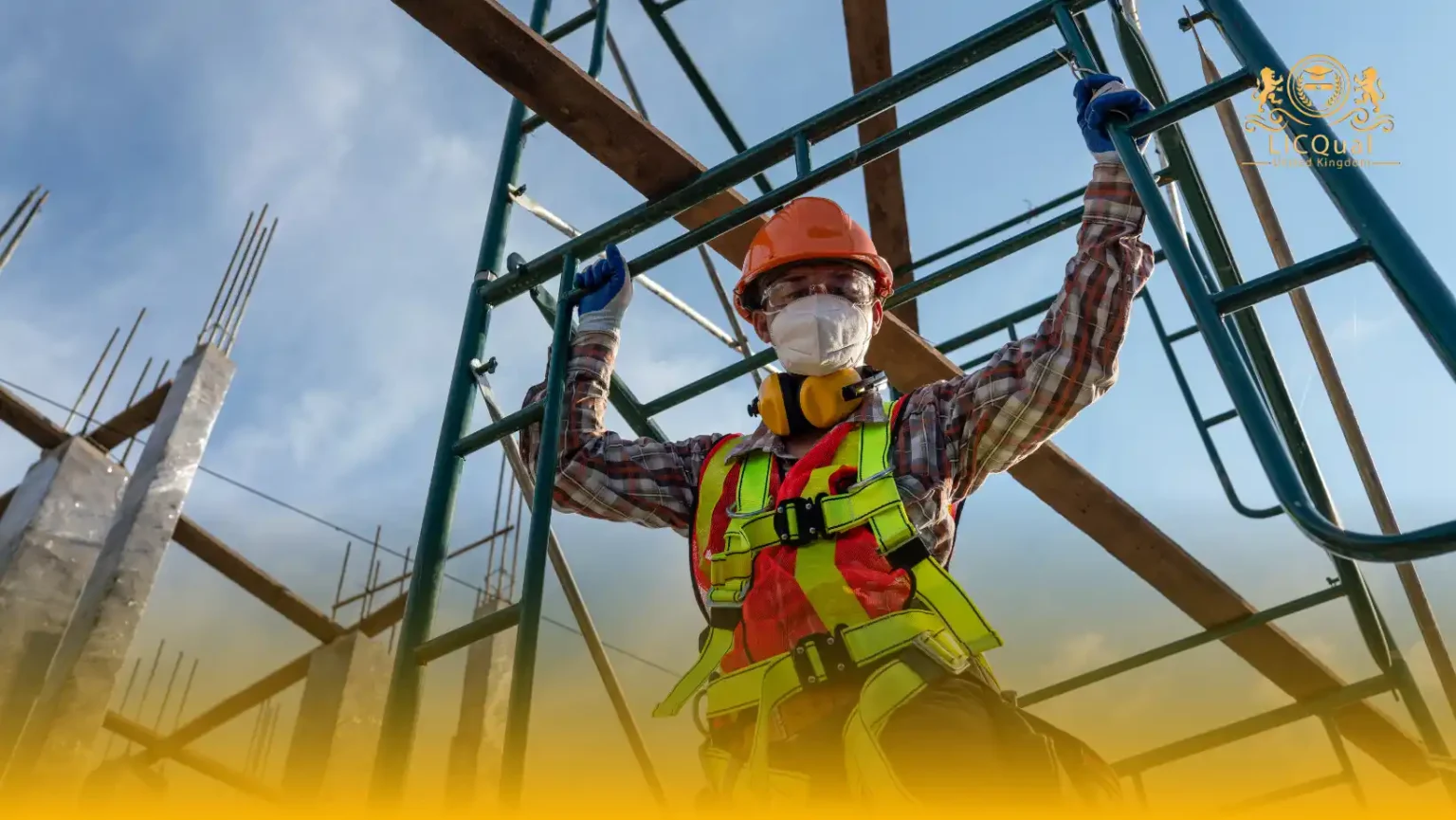The LICQual Level 2 Award in Scaffolding is a globally recognized qualification designed to equip applicants with the essential skills, knowledge, and practical expertise required for safe and effective scaffolding operations. Scaffolding plays a crucial role in the construction, maintenance, and industrial sectors, where safety, structural integrity, and compliance are non-negotiable. This course provides a comprehensive foundation for individuals looking to start or advance their career in scaffolding, while meeting international safety and operational standards.
Developed in accordance with industry best practices and regulatory guidelines, the LICQual Level 2 Award in Scaffolding covers the critical competencies necessary for working confidently and responsibly in real-world environments. applicants will be trained in the proper erection, modification, and dismantling of scaffolding structures, with a strong focus on risk management, hazard identification, and workplace safety. This ensures that every task is performed in compliance with international health and safety legislation.
Led by industry-qualified trainers, this course balances theoretical instruction with hands-on training to ensure applicants understand both the “why” and the “how” of scaffolding operations. Whether you are just beginning your scaffolding journey or are seeking formal recognition of your existing skills, this award provides a valuable steppingstone for professional development and global employability.
By earning the LICQual Level 2 Award in Scaffolding, participants demonstrate competence, reliability, and a commitment to safety—qualities that are highly sought-after by employers worldwide. This certification opens doors to employment across a range of sectors including construction, oil and gas, shipbuilding, industrial maintenance, and infrastructure development.
The LICQual Level 2 Award in Scaffolding is structured to provide applicants with a thorough grounding in all aspects of scaffolding work, from basic principles to advanced practical applications. The course begins with an introduction to scaffolding types, materials, and tools, followed by modules covering planning, layout, safety procedures, and compliance with international standards.
Participants will explore scaffolding terminology, load calculations, and the principles of structural stability. Emphasis is placed on safe working practices, personal protective equipment (PPE), and fall prevention measures, all of which are vital for minimizing accidents and maintaining safety on site. The course also includes training on how to interpret scaffold drawings and specifications to ensure structures are built as per design.
Throughout the training, applicants will engage in hands-on exercises that mirror actual worksite conditions. These include the erection and dismantling of various scaffold configurations, hazard assessments, emergency procedures, and collaboration with site teams. The practical sessions are designed to reinforce classroom learning and prepare participants for real-world scenarios.
On successful completion of the course, applicants will be able to demonstrate their ability to construct scaffolding systems efficiently, assess safety risks, and adhere to both site-specific and international regulations. applicants will be assessed through a combination of practical demonstrations and theoretical evaluations to ensure comprehensive understanding and job readiness.
The LICQual Level 2 Award in Scaffolding is ideal for individuals pursuing careers in construction and industrial maintenance, as well as for employers seeking to certify their workforce to an internationally recognized standard. This qualification not only boosts confidence and safety on site but also enhances long-term career prospects in a high-demand field.
Course Overview
Qualification Title
LICQual Level 2 Award in Scaffolding
Total Units
6
Total Credits
6
GLH
12
Qualification #
LICQ2200402
Qualification Specification
To enroll in the LICQual Level 2 Award in Scaffolding applicants must meet the following criteria:
|
Qualification# |
Unit Title |
Credits |
GLH |
|---|---|---|---|
|
LICQ2200402-1 |
Introduction to Scaffolding |
1 |
2 |
|
LICQ2200402-2 |
Scaffolding Safety and Regulations |
1 |
2 |
|
LICQ2200402-3 |
Scaffolding Components and Equipment |
1 |
2 |
|
LICQ2200402-4 |
Erection and Dismantling of Scaffolding |
1 |
2 |
|
LICQ2200402-5 |
Inspection and Maintenance of Scaffolding |
1 |
2 |
|
LICQ2200402-6 |
Risk Assessment and Hazard Control |
1 |
2 |
By the end of this course, learners will be able to:
Introduction to Scaffolding
- Understand the fundamental principles and purpose of scaffolding in construction.
- Identify the various types of scaffolding and their applications on construction sites.
Scaffolding Safety and Regulations
- Recognize and adhere to health and safety regulations and industry standards relevant to scaffolding work.
- Understand the importance of personal protective equipment (PPE) and safe working practices on scaffolding projects.
Scaffolding Components and Equipment
- Identify and describe the key components of scaffolding systems, including tubes, fittings, boards, and access equipment.
- Understand the role of different scaffolding equipment and tools in the erection and maintenance process.
Erection and Dismantling of Scaffolding
- Safely and efficiently erect and dismantle scaffolding structures, following approved procedures and manufacturer instructions.
- Apply best practices for ensuring stability and safety during the assembly and disassembly of scaffolding.
Inspection and Maintenance of Scaffolding
- Perform routine inspections of scaffolding structures to ensure their safety and compliance with regulations.
- Understand the process of maintaining scaffolding equipment and structures to extend their service life and ensure continued safety.
Risk Assessment and Hazard Control
- Conduct risk assessments specific to scaffolding tasks and environments.
- Identify potential hazards associated with scaffolding work and implement appropriate hazard control measures to mitigate risks.
This diploma is ideal for:
- Individuals looking to start a career in the scaffolding industry or construction sector.
- Those seeking to gain essential scaffolding skills and formal qualifications to enhance their employability.
- Entry-level workers or laborers in the construction industry who want to specialize in scaffolding.
- Professionals seeking to improve their knowledge of scaffolding safety, regulations, and equipment.
- Workers who are already involved in scaffolding work and wish to formalize their experience with a recognized qualification.
- Anyone interested in learning the fundamentals of scaffolding, including erection, dismantling, inspection, and maintenance.
- Individuals looking to meet industry-specific health and safety standards in scaffolding and construction.
- Those aiming to progress in the construction field and explore further opportunities in scaffolding supervision or management.
Assessment and Verification
All units within this qualification are subject to internal assessment by the approved centre and external verification by LICQual. The qualification follows a criterion-referenced assessment approach, ensuring that learners meet all specified learning outcomes.
To achieve a ‘Pass’ in any unit, learners must provide valid, sufficient, and authentic evidence demonstrating their attainment of all learning outcomes and compliance with the prescribed assessment criteria. The Assessor is responsible for evaluating the evidence and determining whether the learner has successfully met the required standards.
Assessors must maintain a clear and comprehensive audit trail, documenting the basis for their assessment decisions to ensure transparency, consistency, and compliance with quality assurance requirements.

